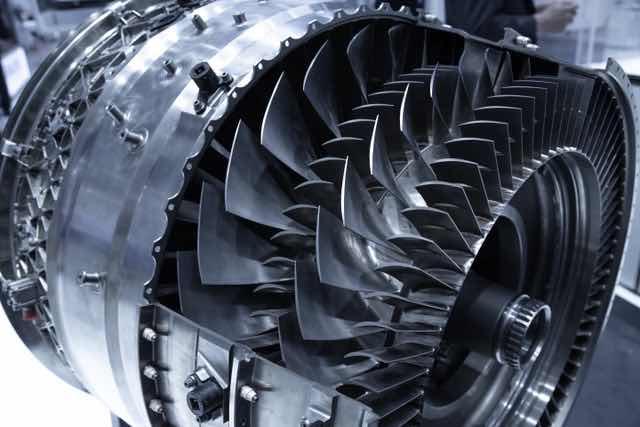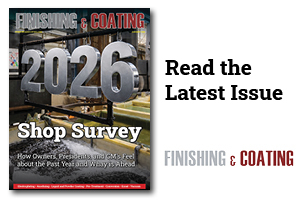This report documents the evaluation of a trivalent chromium pretreatment (TCP), or trivalent chem film, as a “post coating,” or top coat, to improve the corrosion resistance of electroless nickel processes popular in the American, Canadian, Mexican, European, Asian, and South American markets.
 Shay Davis, Chemeon Surface Technology; and James Wetherald and Joe Zabielski Ronatec C2C.Ronatec C2C has compiled and combined 18 months of testing and data below for review.
Shay Davis, Chemeon Surface Technology; and James Wetherald and Joe Zabielski Ronatec C2C.Ronatec C2C has compiled and combined 18 months of testing and data below for review.
All testing used an average of four panels plated/coated with the test parameters detailed below at a 1-mil (0.001-inch or 0.0254-mm) thickness. The goal was to meet or exceed the specification-neutral salt spray requirements and discontinue salt spray upon visible red rust formation for all tests, comparing each process with and without a TCP top coat.
Introduction
Electroless nickel (EN) plating is a method that uses a chemical solution as the catalyst for reducing nickel ions and deposition of the resulting nickel alloy onto a substrate such as metal or plastic.
Electroless nickel plating has many capabilities and benefits in the oil and gas, aviation, automotive, decorative, and electrical industries. Uniform coating deposition (regardless of the substrate surface geometry), hardness, and magnetic response are some of the electroless nickel’s unique properties. Electroless nickel has an ultrafine amorphous structure that protects against corrosion. The following testing was performed to further improve upon the natural structure.
Methods
 Researchers conducted six tests with Restriction of Hazardous Substances Directive (RoHS)-compliant EN and 4130 steel panels. Each test utilized a Ronatec proprietary Panel Preparation Cycle (PPC) and RC100 Ronatec EN test panel rack.
Researchers conducted six tests with Restriction of Hazardous Substances Directive (RoHS)-compliant EN and 4130 steel panels. Each test utilized a Ronatec proprietary Panel Preparation Cycle (PPC) and RC100 Ronatec EN test panel rack.
These tests were largely similar. Each began with five minutes of soaking the plates with an agitated Ronatec ST-100 solution at 0.5 lb/gal, 150°F. From there, the plates underwent a 30-second rinse in non-agitated DI water at ambient temperature and a 60-second rinse in <1MSM water at ambient temperature, overflowing to the Ronatec water recycling system. The tests then called for two minutes of a forward and reversed cyclical current in a 0.5 lb/gal Ronatec E-100 ElectroClean solution at 120°F. After another rinse cycle identical to the first, the plates spent one minute in a 0.25 lb/gal Ronatec ST Act-1 Activator solution at ambient temperature.
After a third rinse cycle, the plates underwent process-specific treatments. The mid-phosphorus panels underwent a 72-minute treatment of Ronatec EN1000 Mid Phos EN at full concentration, with a pH of 4.91, temperature of 189°F, and 1 mil (10/10ths) build thickness. The high-speed, high-phosphorus panels without PTFE co-deposits went through an 87-minute treatment of Ronatec EN 1012 High Phos EN at full concentration, a pH of 4.89 for the control panels and 4.91 for the test panels, a temperature of 189°F and a 1 mil (10/10ths) build thickness. Lastly, the high-speed, high-phosphorus panels with PTFE went through a 135-minute process of Ronatec EN 1015 High Phos EN at full concentration, a pH of 4.88, a temperature of 191°F, a 1 mil (10/10ths) build thickness and 6 g/L of PTFE.
All the panels then went through another standard rinse cycle, with the control panels then undergoing an additional 60-second rinse in <1MSM water overflowing to the Ronatec water recycling system at 170°F. The test panels, meanwhile, began a six-minute CHEMEON TCP-HF process at 28% and a temperature of 80°F in a DI water solution. The test panels were then finished with a 30-second rinse in <1MSM water overflowing to Ronatec’s water recycling system at ambient temperature.
Results
Operators tested panels by ASTM B117 neutral salt spray (NSS) exposure and terminated upon signs of red rust development. Please note that higher salt spray hours are difficult to monitor hourly. Thus, data shows the last time researchers viewed panels before the panels showed “red rust.” Table I details the tests with corresponding data and results.
Table I Results – Four coatings tested against ASTM B117 neutral salt spray exposure.
| Test # | EN; Thickness | TCP | PTFE | Specification(s) | NSS Goal / Actual (hrs) | Top Coat TCP Improvement (%) |
| 1 | Mid-Phos; 1mil; Ronatec RoHS EN1000 |
No | — | MIL-DTL-26074 | 100 / 210 | — |
| 2 | Mid-Phos; 1mil; Ronatec RoHS EN1000 |
Yes | — | MIL-DTL-26074 | 100 / 286 | 36 |
| 3 | High-Phos; 1mil Ronatec RoHS EN1012 |
No | No | MIL-DTL-26074; ASTM B733 Type 5 |
1000 / 1410 | — |
| 4 | High-Phos; 1mil Ronatec RoHS EN1012 |
Yes | No | MIL-DTL-26074; ASTM B733 Type 5 |
1000 / 1520 | 8 |
| 5 | High-Phos PTFE; 1mil; Ronatec RoHS EN1015 |
No | Yes | MIL-DTL-26074; ASTM B733 Type 5 |
1000 / 1560 | — |
| 6 | High-Phos PTFE; 1mil Ronatec RoHS EN1015 |
Yes | Yes | MIL-DTL-26074; ASTM B733 Type 5 |
1000 / 1760 | 12.8 |
Discussion
All tests passed the specification requirements for neutral salt spray hours of exposure. The results support the theory that adding a trivalent chem film (CHEMEON TCP-HF) significantly increases the corrosion resistance of various electroless nickel coatings.
It is vital to note that the electroless nickel concentrations and cycles reflected a lab setting. Rinses were clean DI utilizing a pre-set microsiemens water quality standard. Optimal tank layout, filtration, ventilation, and controlled heating ensured the best results. Please contact Ronatec for details. As a note, Ronatec’s exact RoHS EN1015 process is proprietary to Ronatec customers only, and the full process is not as described above.
Based on the test data using Ronatec’s electroless nickel processes for mid-phosphorus and high-speed phosphorus with and without PTFE, CHEMEON concludes that its TCP-HF trivalent top coat is an effective addition to the EN process.
Future Testing
Ronatec is currently conducting testing to include the following parameters:
- Mid-Phos baked for hydrogen embrittlement, then a top coat of TCP-HF
- Mid-Phos, coat of TCP HF, then PTFE post-dip
- High-Speed High-Phos PTFE(PFOA free) with TCP-HF
Administrative Information: James Wetherald (Ronatec VP) and Joe Zabielski (Ronatec Technical Director) of Ronatec C2C Inc. in Oceanside, CA. performed the work described in this report using Ronatec’s laboratory and customer facilities.
Acknowledgments: CHEMEON would like to thank Ronatec C2C Inc. for performing all the testing and providing the data through completion. CHEMEON and Ronatec greatly appreciate and thank Ronatec’s customer base for allowing the use of their facilities for testing.
References
- “Electroless Nickel Plating (EN Plating).” CORROSIONPEDIA, 28 Aug. 2014, updated 31 Dec. 2019, www.corrosionpedia.com/definition/438/electroless-nickel-plating-en-plating.
- Parkinson, Ron. “Properties and Applications of Electroless Nickel.” Nickel Institute, Nickel Development Institute, nickelinstitute.org/media/1769/propertiesandapplicationsofelectrolessnickel_10081_.pdf.

































